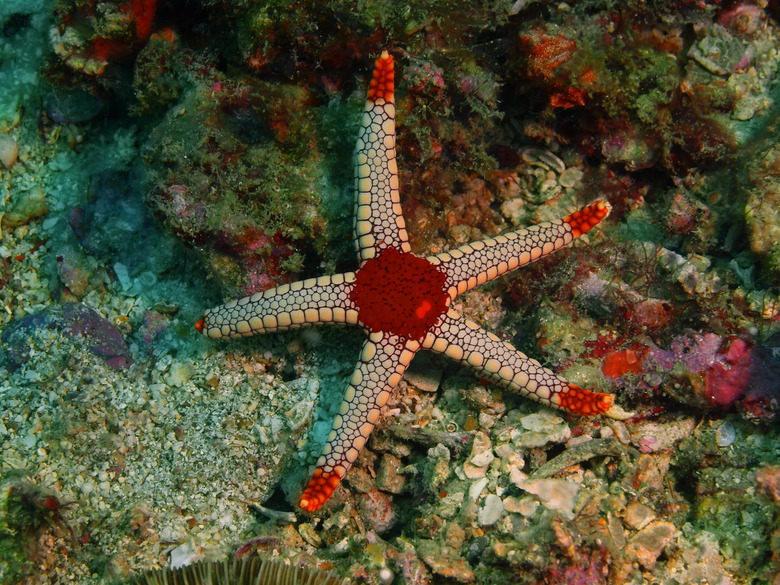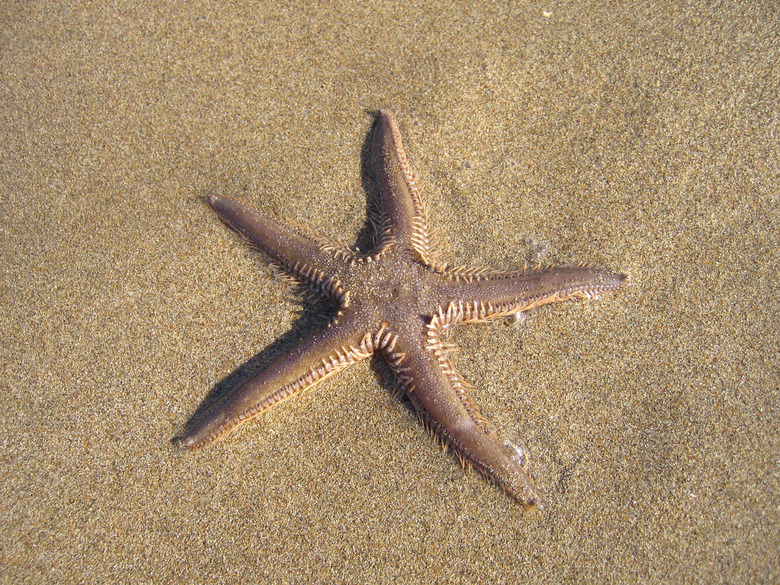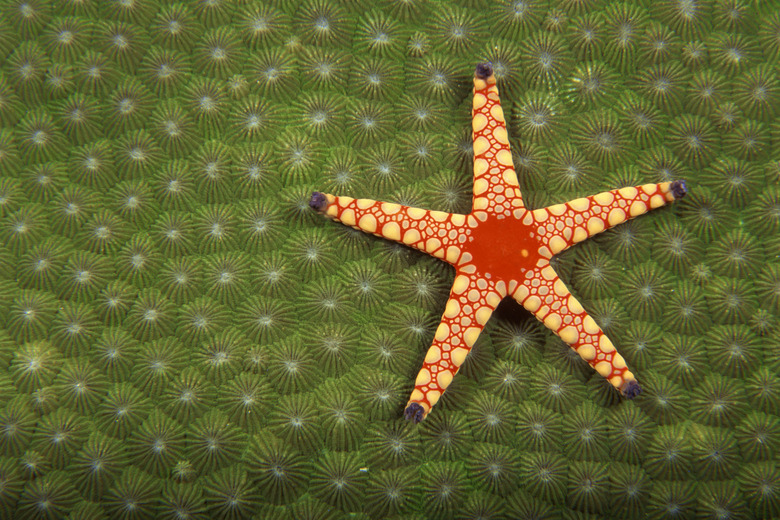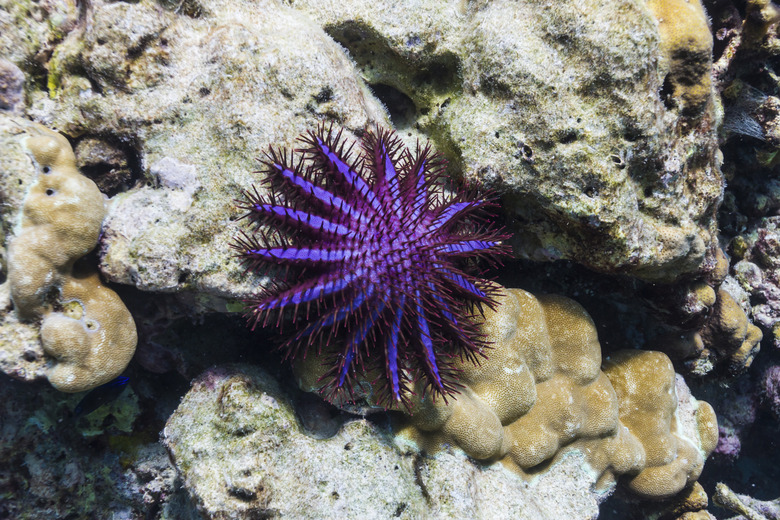What Are Some Ways Starfish Adapt To Their Environment?
Starfish, or sea stars, are marine animals commonly observed in rocky tide pools, and washed up onto the shore's of all the world's oceans. They live in tropical intertidal zones and on the seafloors of colder climates. They're classified as invertebrate echinoderms, along with their close relatives the sea urchins, sea cucumbers and sand dollars. Most of the 2,000 species of starfish have five arms, while some species have up to 40 arms.
TL;DR (Too Long; Didn't Read)
Starfish have developed protective shells and the ability to regenerate lost limbs for safety. They've also evolved structures to easily pry open the shells of their prey, and a digestive system primed to digest much larger prey than you might expect.
Regeneration
Regeneration
The ability to regenerate amputated limbs and lost body parts is the starfish's most striking adaptation to its dangerous marine environment. After a predator's attack a few species of starfish can regrow almost their entire bodies from just a part of a severed arm. Other species require an intact central body to regenerate. This adaptation is possible because most, or all, of their vital organs and nervous systems are located in their arms. Starfish have no brains to be injured in an attack.
Feeding Habits
Feeding Habits
Starfish have evolved to fit their environment by developing various specialized feeding habits. Most starfish are carnivorous hunters that prey on specific animal species such as mussels, clams, oysters and sea snails. They locate their quarry with light-sensing eyespots at their arm tips, then pry open the mollusks' shells with hundreds of suction-cupped tube feet. Other species are scavengers, eating decomposed dead plants and animals. Some species have diets consisting of algae and plankton.
Digestive Systems
Digestive Systems
Starfish have developed special digestive systems adapted to the food sources found in their particular environment. They have dual stomachs, called the cardiac stomach and the pyloric stomach. The cardiac stomach is a sacklike organ located at the center of their bodies. The stomach is externalized through their mouths to envelop and digest their prey. They inject it into bivalve mollusks and suck out the soft internal body parts. Digestion is then completed in the pyloric stomach. This adaptation allows starfish to eat animals much larger than their mouths.
Other Adaptations
Other Adaptations
Starfish have tough, bony, calcified skin that protects them from predators. The spiny skin's colors act as camouflage to help the starfish blend into its environment. Some species have bright colors to scare off or confuse attackers. Instead of blood, starfish have a seawater vascular system that circulates nutrients and powers their tube feet, allowing them to move about their environment. Starfish produce and expel huge amounts of eggs and sperm into the water giving them a better chance of survival.
Cite This Article
MLA
Whitmer, Phil. "What Are Some Ways Starfish Adapt To Their Environment?" sciencing.com, https://www.sciencing.com/ways-starfish-adapt-environment-8285529/. 24 April 2018.
APA
Whitmer, Phil. (2018, April 24). What Are Some Ways Starfish Adapt To Their Environment?. sciencing.com. Retrieved from https://www.sciencing.com/ways-starfish-adapt-environment-8285529/
Chicago
Whitmer, Phil. What Are Some Ways Starfish Adapt To Their Environment? last modified March 24, 2022. https://www.sciencing.com/ways-starfish-adapt-environment-8285529/




